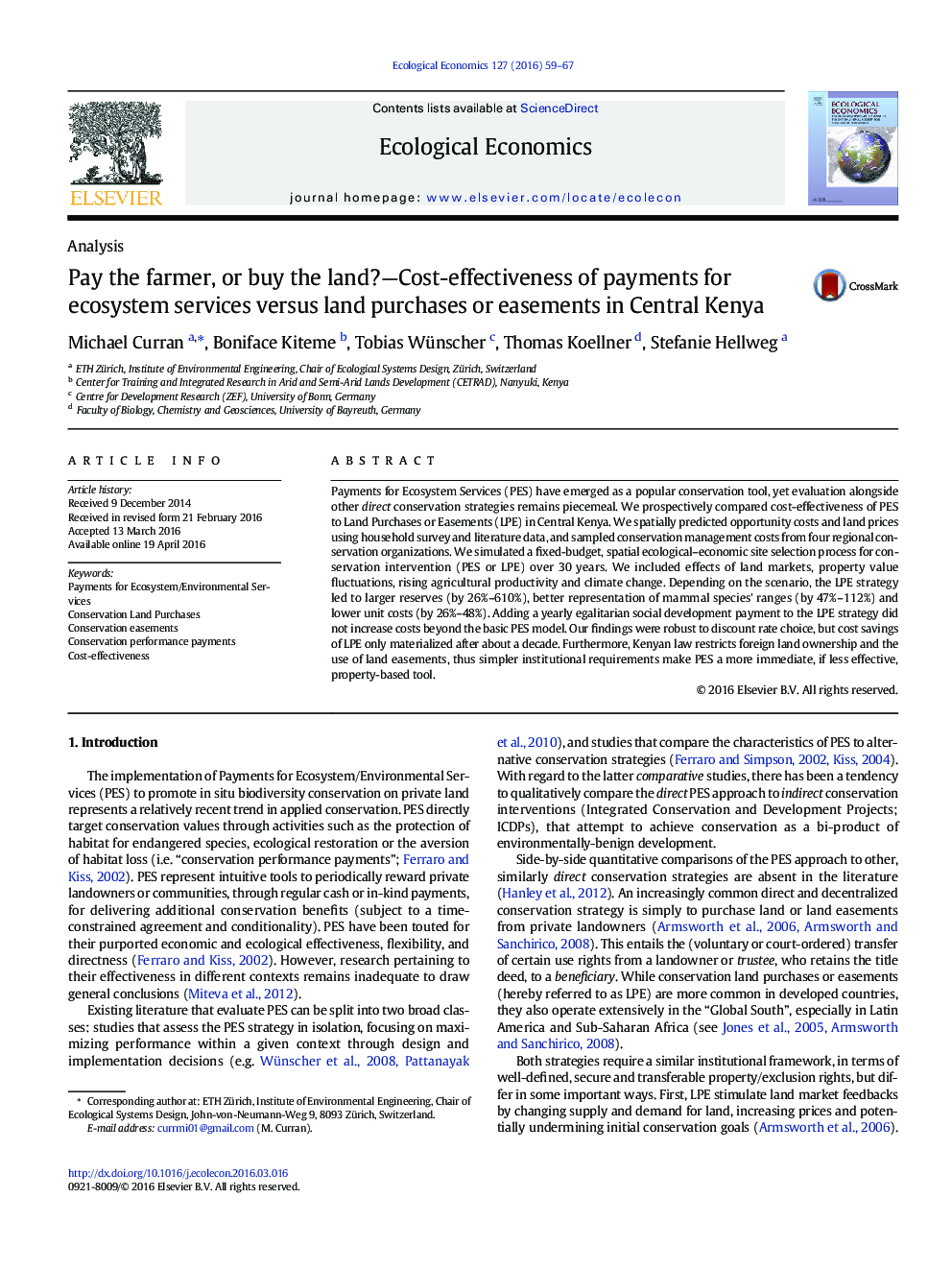| Article ID | Journal | Published Year | Pages | File Type |
|---|---|---|---|---|
| 5049110 | Ecological Economics | 2016 | 9 Pages |
Payments for Ecosystem Services (PES) have emerged as a popular conservation tool, yet evaluation alongside other direct conservation strategies remains piecemeal. We prospectively compared cost-effectiveness of PES to Land Purchases or Easements (LPE) in Central Kenya. We spatially predicted opportunity costs and land prices using household survey and literature data, and sampled conservation management costs from four regional conservation organizations. We simulated a fixed-budget, spatial ecological-economic site selection process for conservation intervention (PES or LPE) over 30Â years. We included effects of land markets, property value fluctuations, rising agricultural productivity and climate change. Depending on the scenario, the LPE strategy led to larger reserves (by 26%-610%), better representation of mammal species' ranges (by 47%-112%) and lower unit costs (by 26%-48%). Adding a yearly egalitarian social development payment to the LPE strategy did not increase costs beyond the basic PES model. Our findings were robust to discount rate choice, but cost savings of LPE only materialized after about a decade. Furthermore, Kenyan law restricts foreign land ownership and the use of land easements, thus simpler institutional requirements make PES a more immediate, if less effective, property-based tool.
